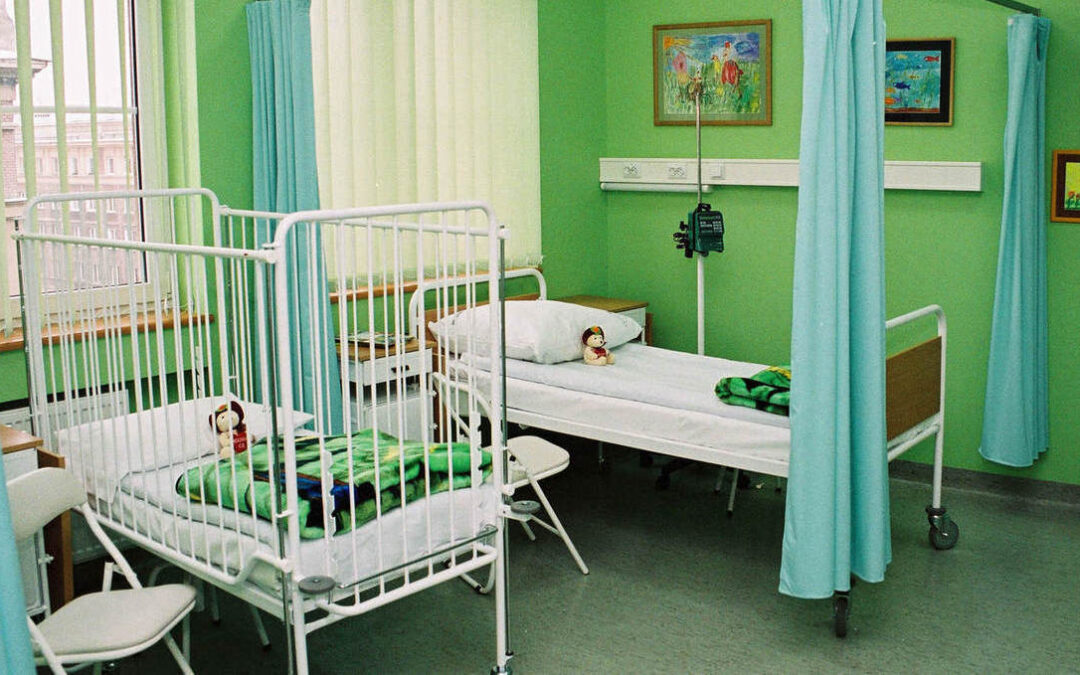Restricted viewing
As someone who has worked in NHS children’s wards, I am particularly interested in the long-held beliefs around parental visiting times. Until the 1980s, it was common practice to restrict the visiting of parents on children’s wards, even for babies and children under three. There were many reasons given, even though there was considerable evidence of the harm it caused.
Something extraordinary happened when the psychoanalysts James Robertson and John Bowlby showed the film ‘A two year old goes to hospital’ to a large audience of paediatricians and nurses at the Royal Society of Medicine in 1952. This heart-wrenching recording shows how the child moves through different stages of emotions, from acute crying and distress, pleading to go home, protesting, “I want my Mummy” and then eventually to despair. Over the eight days of her admission, the child becomes listless, unsmiling, and detached and even turns away from her mother during visiting times.
The extraordinary thing is that, despite this evidence and the considerable data Robertson and Bowlby had gathered, the audience was incapable of overcoming confirmation bias and admit that the child was distressed, and were reluctant to believe that such a reaction might cause long term damage. A similar thing happened when Robertson showed the film to American paediatricians the following year, where audiences thought that, whilst the findings were applicable to British children, they did not apply to US children.
Hidden in plain sight
When I first read this account, I was shocked and wondered how these presumably intelligent and caring healthcare professionals could behave in such a way. Then I realised that perhaps their response was actually quite ordinary and that they were affected by confirmation bias. Clearly the desired conclusion i.e. the one that supported their belief that children were well cared for in hospitals and not harmed in any way, was more likely to be processed by the brain and labelled as true, than the information presented to them in the film.
System 1 and System 2 thinking
The necessary change in attitude towards parental visiting by paediatricians took many years to achieve. Such was the power of this confirmation bias that the lie that parents cause distress to their children and bring infection onto the ward was still widespread when I started my first job in paediatrics in 1984 and only 49% of wards allowed unrestricted access for parents.
What Daniel Kahneman explains so clearly in his book Thinking, Fast and Slow, is that cognitive biases such as this one are our brains’ way of conserving energy and running on what he calls ‘System 1’ thinking. In other words, they are hardwired into our day-to-day functioning and enable us to make a rapid assessment of a situation, which is normally both necessary and effective. Yet when there are complex problems to solve and new situations to face, System 1 thinking and its cognitive biases gets in the way of effective and efficient change, as this account from 1952 demonstrates.
Overcoming confirmation bias
So what can be done to shift into the more useful System 2 thinking at such times? Whilst there are many tools available to teams to facilitate such a shift, the After Action Review is particularly suited because the AAR Conductor actively facilitates the team into a more logical thinking environment and nurtures the psychological safety required for exploration and analysis.
The AAR Conductor’s role is to keep the participants’ attention focused on System 2 thinking, building a shared mental model of the event and then to use this as the basis for planning effective change. One of the joys of being an AAR Conductor is when you see participants make the shift to the bigger System 2 thinking in front of you and the light bulbs of learning switch on as a result.
I am very thankful for the film that James Robertson made, as it paved the way for the rights of children to have their parents with them in hospital throughout this most stressful of experiences. Yet the slow rate of change illustrates the power of this most ordinary of human foibles, and the enormous challenge of overcoming confirmation bias.

